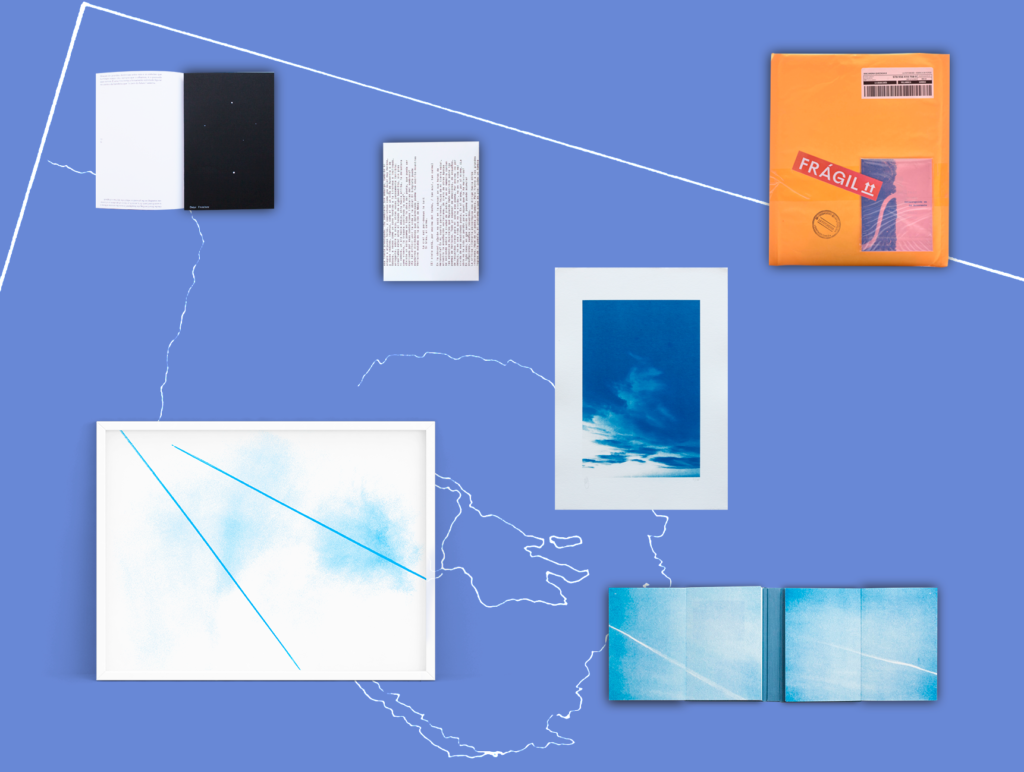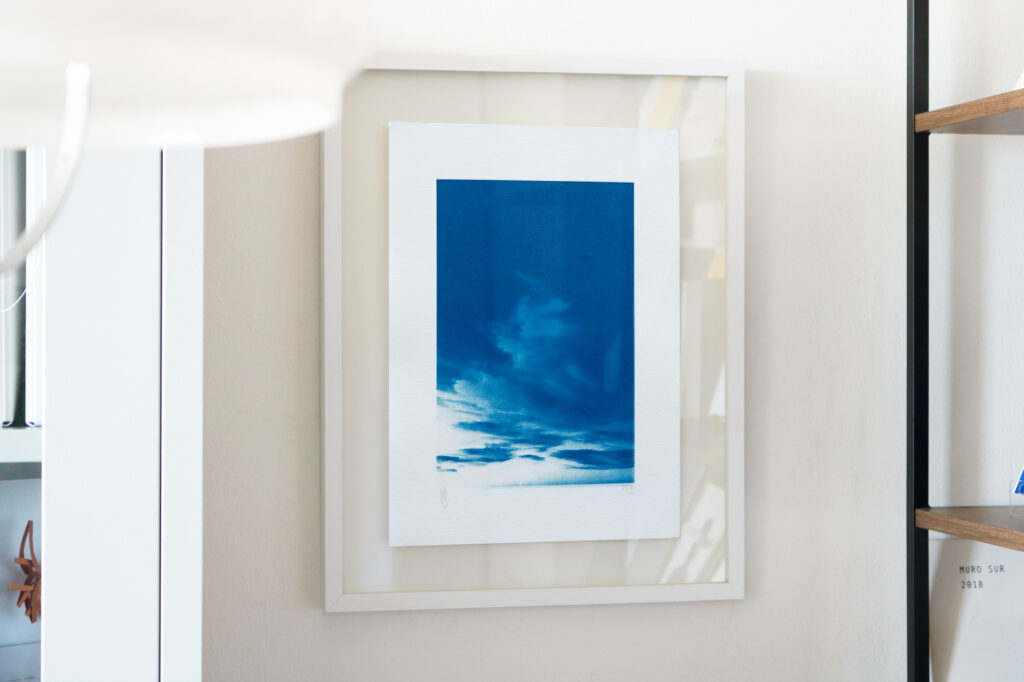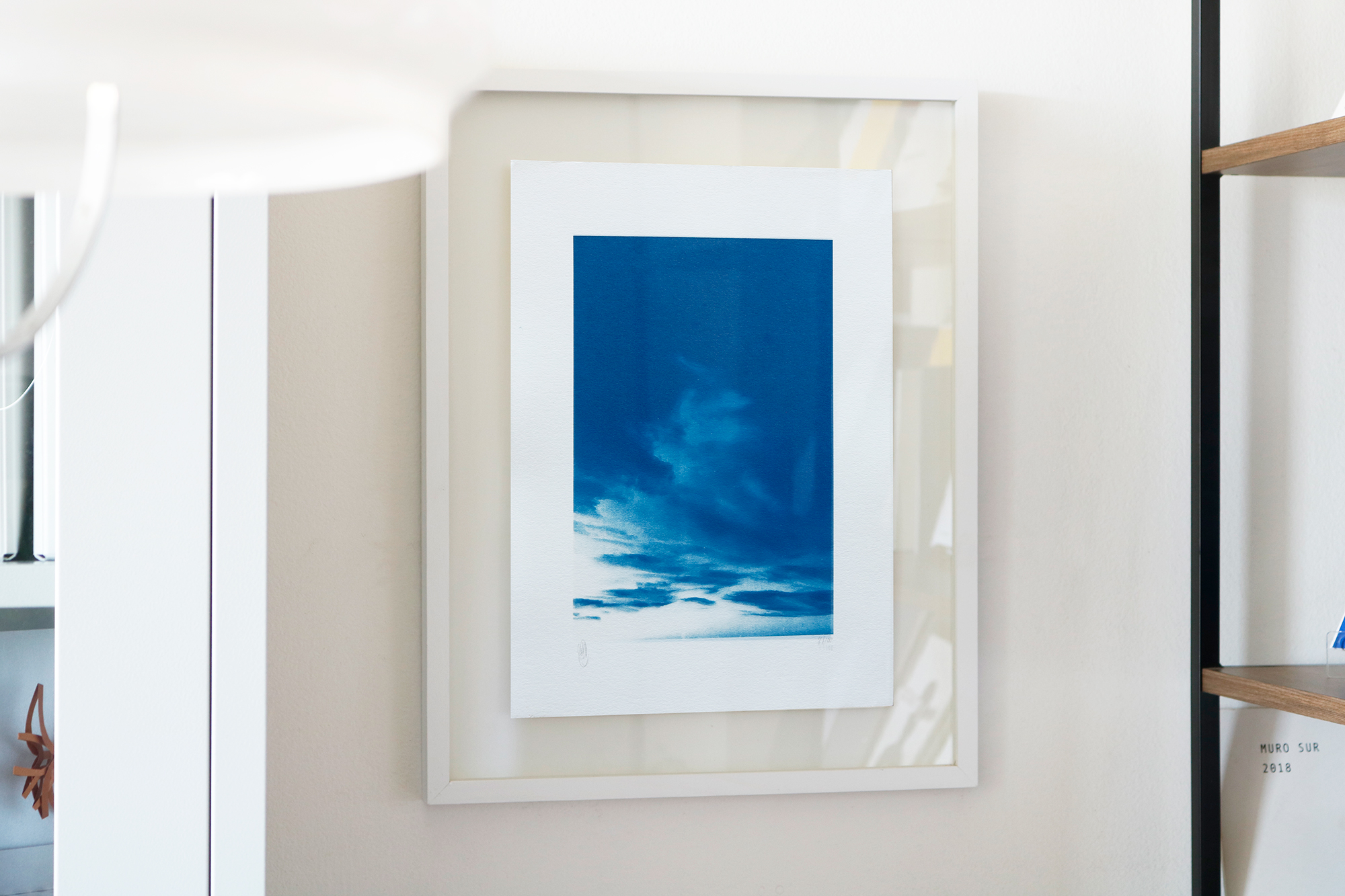As we told you in the last newsletter, one of our favorite holidays is Lunar New Year. That’s why we spent January preparing to receive it by cleaning the workshop, throwing away and giving away things we don’t need, reading the I Ching, and planning the next few months to start the Year of the Dragon with everything in order.
All these preparations, after all, come from an interpretation of the phenomena that occur in the sky and determine the closing and opening of cycles.
This inspired us to begin the first curatorship of the bookshop’s catalog, searching among all the available publications for those that, in one way or another, take on the task of reading the sky and looking for signs of all kinds in its movements, or just behaving as an evocative element that awakens in us the most diverse sensations.
A table with bookshop publications addressing phenomena in the sky would look something like this:

The publications are as follows:
- Interrupción en La Araucanía. Registro estenopeico de un eclipse de Macarena Quezada Bilbao (Self-published, 2022)
Interrupción en La Araucanía (Interruption in The Araucanía. Pinhole photograph of a solar eclipse) is the result of a two-year photographic research, which culminates in this publication on eclipses, experimental photography and cycles. This project is an invitation to think about the interruptions of life, the territory and the way in which identity is intertwined with the land, and the sky we inhabit.
This publication began with the question of what happened to the line that marks the sun’s trajectory in a solarigraphic image on the day of the eclipse. Twenty people accepted the invitation and photographed the solar eclipse with cameras made from beverage cans.
2. from her(e) to now(here) by Pablo Vindel (Naranja Publicaciones, 2019)
The process of editing this book began with a digital archive containing a collection of chemtrail photographs. Some of them were captured by Pablo Vindel and others were sent by his friends and family.
Something that interested Pablo in this series of images is the duality reflected by these traces in the sky, which can be read as lines or simply appreciated for their beauty. There are even hundreds of conspiracy theories that try to give it an explanation, a function and an origin.
It is these attempts to give meaning to these stelae that links the collection to Pablo’s practice related to writing and language.
The process of printing the photographs in risographs visually equalized the collection, which increasingly moved away from the notion of sky, and became white strokes on a blue canvas. And from stelae, they become traces drawn with chalk, or else, asemic writings.
The collection is presented in this double book, which allows the reader to articulate different combinations. It is preceded by a text by Pablo that can be read in two voices: one that gives scientific facts and the other that appeals to childhood memories, relating these lines to his grandmother’s work or the splinter that his mother carefully removed from his foot when Vindel was a child.
And finally, from her(e) to now(here) went from being a collection of stelae to become a tribute to Pablo’s mother, who passed away when he was a child. While the strokes took on a new meaning: attempts to communicate with her memory.
At the end of the book, a double endpaper gathers her eyes, slightly out of focus, constructed of the same blue from which the sky was built.
3. from her(e) to now(here),silkscreen by Pablo Vindel (Naranja Publicaciones, 2019)
For the 2019 New York Art Book Fair, we published this series of silkscreen prints printed on 15 gram Japanese paper, showing in negative the image of 2 chemtrails. This time the sky blue becomes white, and the strokes are shown in blue.
The movement generated by this silkscreen is interesting due to the lightness of the paper. The slightest breeze lifts the paper and transforms these strokes into moving shapes.
4. [El cielo está, por encima del techo / tan azul, tan calmo.] by Sebastián Arancibia (Naranja Publicaciones, 2023)
[El cielo está, por encima del techo / tan azul, tan calmo.] [The sky above the roof / Is so blue, so calm.] is the second part of the trilogy that began with “The poetic reverie, on the contrary…”, in which the image of the house is explored from a quotation found in a book by the philosopher Gaston Bachelard.
If, in the first part, the search for the house was produced by the visual conformation of its façade – obtained from photographic archives due to the impossibility of obtaining this image due to the quarantine – in this second part, the skies seen from inside the house are the only photographs that make up this book.
As a tribute to On Kawara’s million years, this publication acts as a hand-stamped calendar of those monotonous days of confinement, whose only variable element was, in many cases, looking out of the window and noticing the clouds, their changing shapes, their colors.
5. Cyanotype #16 of the Lugar series by Catalina De la Cruz (self-published, 2018).
The Lugar Series by Chilean artist Catalina de la Cruz are fragments of a space seen from different scales, ranging from a stone that fits in a hand to the aerial vision of a river.
Cyanotype #16 shows us a sky like that of those stormy days, the afternoon of a fire, or the thick clouds of every morning on the coast. There is something that attracts us in this way and that awakens certain memories or certain images, which may even be things that we have not lived. Right now, as we write this, we think of the intense smoke of an erupting volcano.
We always remember when Catalina told us about this cyanotype: “The image works either in its original position or inverted. And this opening, which generates the position in the image, is related to the last book of the curatorship.

6. Dossiê Cruzeiro do Sul by Lays Myrrha (IKREK, 2017)
The relationship between national flags and star elements is broad and significant. A star can mean several things, such as the composition of the state; or a sun can evoke a patriotic landmark. This book is a little bit about that.
The Brazilian flag contains the Southern Cross. This presence is the subject of the book by Lays Myrrha, a Brazilian artist who, after analyzing the constellation, realizes that it is positioned upside down in the patriotic symbol.
This curious discovery leads her to create a narrative that goes back to the Bronze Age and forward to the time of the book’s publication, linking the stars of the constellation to political events and power games.
With an interesting design proposal, it plays with the idea of the original and its inverted form, culminating in a perforated piece taken from the book and showing the constellation. It is interesting to note that the texts written in one of its corners invite to turn the plate upside down, completing the inverted presence of the Southern Cross in the Brazilian flag.






 No products in the cart.
No products in the cart.